|
Displaying items by tag: Boston
The Highland Street Foundation announced today its sixth annual “Free Fun Fridays” initiative, a summer program that opens doors at no cost to visitors to many of the most treasured cultural venues in Massachusetts. This year, 66 museums and cultural institutions will participate in the program, an increase from the 60 venues that participated in 2013. Beginning June 27th through August 29th, between five and seven venues will be open free-of-charge every Friday for 10 weeks this summer.
“Boston has a rich cultural and historical heritage, and programs like Highland Street Foundation’s ‘Free Fun Fridays’ provide every member of our community with access to the state’s top-tier art, history, music and culture,” said Boston Mayor Martin J. Walsh, a strong advocate for youth summer programming. “With summer around the corner, I encourage the community to get out and experience the best our City has to offer, and ‘Free Fun Fridays’ is the perfect opportunity to do just that.”
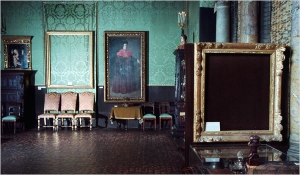
23 years after the notorious Isabella Stewart Gardner Museum heist took place in Boston, the FBI announced that they have identified the thieves responsible for the crime. Officials stated in a press release that the unnamed suspects are from a “criminal organization” based in the Mid-Atlantic States and New England. It is believed that some of the stolen artworks were transported to the Connecticut and Philadelphia regions, where they were offered for sale.
While the works have yet to be recovered, the FBI is reaching out to the public for helpful information and a $5 million reward is being offered for the paintings’ safe return. Today at a news conference, federal law enforcement officials announced that they will launch a comprehensive public awareness campaign that will include a dedicated FBI website, video postings on FBI social media sites, digital billboards, and a podcast.
On March 18, 1990 two thieves posing as Boston police officers entered the Isabella Stewart Gardner Museum and made off with thirteen works of art valued at $500 million. The stolen masterpieces include Johannes Vermeer’s (1632-1675) The Concert, one of only 34 known works by the artist in the world; three works by Rembrandt (1606-1669) including his only known seascape; five drawings by Edgar Degas (1834-1917); and an ancient Chinese vessel from the Shang Dynasty. The Gardner heist remains the largest private property theft ever.
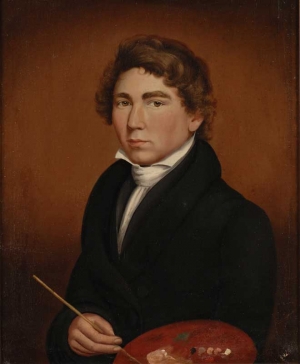
New York’s American Folk Art Museum has mounted an exhibition devoted to the notable Boston-based itinerant folk portraitist William Matthew Prior (1806-1873). Artist and Visionary: William Matthew Prior Revealed was organized by the Fenimore Art Museum in Cooperstown, New York and features over 40 oil paintings spanning Prior’s career from 1824 to 1856.
Prior, who moved from Maine to Boston in 1840, is best known for his paintings of working-class Americans, a demographic that had previously been overlooked by artists. Prior developed a simple, straightforward style to meet the tastes and means of his humble clientele, which often included families and children. However, Prior went on to depict a diverse range of sitters that included himself, a famous preacher, and a number of African Americans. Prior often shifted his style from modest to elaborate based on his subject.
Artist and Visionary: William Matthew Prior Revealed, which is the first comprehensive museum retrospective to focus on Prior, will be on view through May 26, 2013.
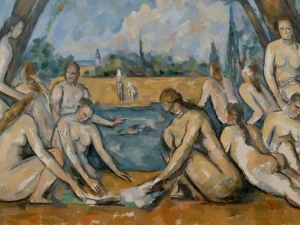
Paul Cézanne’s (1839-1906) The Large Bathers is currently on view at the Museum of Fine Arts, Boston. The work, which is on loan from the Philadelphia Museum of Art, is being exhibited alongside the MFA’s own Where do we come from? What are we? Where are we going? by Paul Gauguin (1848-1903).
The Large Bathers, painted in France between 1900 and 1906, is considered one of the most ambitious of Cézanne’s many works exploring the theme of nudes in a landscape. Serene and idyllic, the painting was left unfinished at the time of Cézanne’s death.
Gauguin’s Where do we come from? What are we? Where are we going?, which was painted between 1897 and 1898, also features nudes in a landscape, but as means to illustrate the inevitable passing of time. Upon its completion, Gauguin said, “I believed that this canvas not only surpasses my preceding ones, but that I shall never do anything better – or even like it.” Gauguin attempted suicide after finishing the painting but was unsuccessful.
Exhibited together for the first time in Boston, Large Bathers and Where do we come from? What are we? Where are we going? bridged the gap between art of the 19th and 20th centuries. In doing so, Cézanne and Gauguin influenced a generation of modern artists including Pablo Picasso (1881-1973) and Henri Matisse (1869-1954).
The two paintings will be on view at the MFA through May 12, 2013.
March 9–10, 2013 Auction
93 Pleasant Street, Portsmouth, NH
www.northeastauctions.com; 603.433.8400; or This email address is being protected from spambots. You need JavaScript enabled to view it.
This March, Northeast Auctions will offer collections from an all-star cast of consignors. Selections include American furniture deaccessioned from the Museum of Fine Arts-Boston; Historical Blue Staffordshire deaccessioned by the Los Angeles County Museum of Art; Rhode Island furniture from the estate of an Isham family member; and furniture from a Boston estate, among which is a Salem chest by John Chipman. Property of various owners includes two pieces of New York silver: a Peter Van Dyke caster (1730–1740) and a George Ridout salver (ca. 1745) with presentation inscription from Peter and Sarah Van Brugh to their grand-daughter Sarah Livingston.
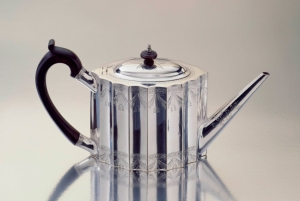
Despite its stellar reputation, the Detroit Institute of Arts’ collection of early American silver has spent the past ten years in storage. Much to the public’s satisfaction, the museum recently decided to put 59 of its most important works back on view.
The Detroit Institute’s silver collection was placed in storage in 2002 while the museum’s historic building was undergoing renovations, which lead to the closure of the American colonial galleries. When the revamped museum reopened in 2007, depleted funds rendered the institution unable to buy new exhibition cases for the silver collection. It wasn’t until 2011 when the Michigan-based Americana Foundation awarded the Detroit Institute a grant that the museum was able to obtain state-of-the-art exhibition cases for their silver collection. The Americana Foundation’s grant also supported new research on the museum’s silver collection.
The Detroit Institute of the Art’s new installation includes American silver as well as two important pieces of late 18th century Chinese export bowls. Highlights include a tankard made in Boston by Edward Winslow (1669-1753) in approximately 1695; a sugar bowl with cover made in New York by Myer Myers (1723-1795), the preeminent Jewish silversmith in colonial America; and a sugar basket made by silversmith and patriot Paul Revere (173-1818) in 1780.
Continuing his family’s tradition as a Boston art dealer, Adam Adelson, son of preeminent New York City art dealer and former Boston gallery founder Warren Adelson, has opened an impressive 2-floor gallery in Boston that specializes in contemporary and modern art. Says Adelson, “My family’s business in art has inspired me to pursue the same profession. We plan to exhibit pieces that in some small way define our generation.” The gallery is currently showing “Modern Masters” through January 30. Opening February 1 and extending through March 17, 2013, the gallery will be hosting an exhibit on Winfred Rembert. Of the show, Adelson says, “I am happy to introduce Winfred Rembert to Boston. His amazing life story, which he tools on leather, is not only an inspiration, but an important part of American history.
Adelson Galleries Boston is located at 520 Harrison Avenue, Boston, MA. For more information call 617-832-0633 or visit www.adelsongalleriesboston.com.
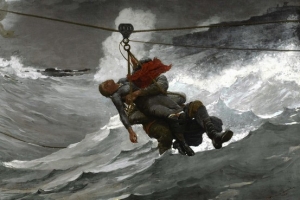
Winslow Homer (1836–1910), one of the foremost figures in American art, is well known for his sea scenes and marine paintings. Born in Boston, Massachusetts, Homer was an avid traveler and spent time living and working in New York City, Paris, and England, among other places. However, during his years in Prout’s Neck, Maine, Homer produced some of his most defining masterpieces.
Homer moved to Maine in 1883 and spent most of his time working in his studio, a former carriage house, just 75 feet from the ocean. Homer remained in Prout’s Neck on his family’s property until his death in 1910. Homer’s paintings from this period are defined by their crashing waves, rocky coasts, and his expert use of light; they are also the subjects of two current exhibitions.
The Portland Museum of Art’s show, Weatherbeaten: Winslow Homer and Maine, focuses on Homer’s connection with his Prout’s Neck studio, which the museum now owns. The paintings on display feature the ocean views Homer saw from his home as well as the burly fishermen and statuesque women he often focused on. The exhibition’s range of paintings illustrates Homer’s transition from more populated works to stripped-down paintings that include just sea and land; Homer’s personal life followed a similar evolution.
The Philadelphia Museum of Art is also hosting an exhibition of Homer’s work titled, Shipwreck! Winslow Homer and ‘The Life Line.’ The show is based around the museum’s own painting and Homer’s greatest success, The Life Line (1884), which features a woman being saved from the tumultuous sea by an anonymous hero. Shipwreck! Focuses on Homer’s changing relationship with the sea and includes tranquil marine paintings as well as bleaker scenes.
Weatherbeaten will be on view at the Portland Museum of art through December 30. Shipwreck! ends up its run at the Philadelphia Museum of Art on January 1, 2013.
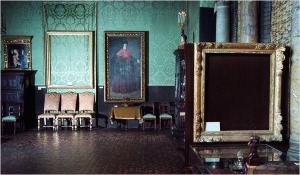
In March of 1990, two thieves posing as Boston police officers entered the Isabella Stewart Gardner Museum and stole thirteen works of art including masterpieces by Vermeer, Rembrandt, Edgar Degas, and Edouard Manet. Now known as the greatest art heist in history, the case has remained unresolved despite the countless hours of investigating the FBI has conducted. While the Bureau has offered immunity to anyone who assisted in the recovery of the artworks, they have never received a concrete lead.
While it would appear that the reputed organized crime figure, Robert V. Gentile, who found himself in federal court this Wednesday on drug trafficking and gun possession was irrelevant to the Gardner case, the FBI believed Gentile had vital information to share. Gentile, 76, of Manchester, Connecticut, helped federal authorities for 10 months prior to his arrest but none of the information was useful in tracking down the thieves. Gentile’s lawyer claims that his client did know some of the individuals the government believed were involved in the heist, but that most of them were dead by now. Gentile now faces a maximum of 150 years in prison if he is convicted. The government is willing to negotiate his sentence so that his prison term will be reduced to 46-57 months.
Gentile became involved in the Gardner case when Elene Guarente, the widow of Robert Guarente, a mob associated who died in 2005, told investigators that her husband gave Gentile a painting that he had kept in a tube since the 1990s.
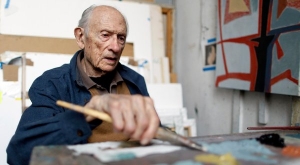
A printmaker and painter, there is a quiet, striking quality that pervades all of Will Barnet’s art. Best known for his portraits of women, children, animals, family members, and friends, Barnet passed away at his home in Manhattan on November 13. He has lived at the National Arts Club building on New York City’s Gramercy Park since 1982. Barnet was 101.
A native of Beverly, Massachusetts, Barnet studied at the School of the Museum of Fine Arts, Boston and then, starting in 1931, at the Arts Students League in New York. It was here that Barnet studied briefly with the early Modernist painter Stuart Davis and became acquainted with Arshile Gorky, a major influence on Abstract Expressionism. Four years after joining the League, Barnet was named the official printer and went on to work for the Works Progress Administration Federal Art Project. He also made prints for well-known artists such as the Mexican muralist Jose Clemente Orozco and the painter and cartoonist William Gropper.
Barnet started out as a Social Realist printmaker and had his first solo exhibition in 1935 at the Eighth Street Playhouse in Manhattan. Three years later, he had his first gallery show at the Hudson Walker Gallery. It was during this time that he married Mary Sinclair, a painter and fellow student. They had three sons.
In the 1940s Barnet was inspired by Modernist inclinations and his paintings became more colorful and fractured, depicting family scenes and young children. By the end of the decade Barnet moved towards complete abstraction after becoming involved with the Indian Space Painters, a group that created abstract paintings using forms from Native American art and modern European painting.
In the 1950s Barnet divorced Sinclair and remarried Elena Ciurlys with whom he had a daughter. It wasn’t until the 1960s that Barnet returned to representational painting, often using his wife and daughter as subjects. Barnet’s style had evolved and the portraits from this time are flatter and more exact. He also made a number of portraits of the architect Frederick Kiesler, the art critic Katherine Kuh, and the art collector Roy Neuberger during this time.
Barnet never stopped painting and continued to experiment and evolve stylistically, returning to abstraction in 2003. In 2010 he was the subject of the exhibition Will Barnet and the Art Students League at the Phyllis Harriman Mason Gallery in Manhattan. He was awarded a National Medal of Arts in 2011, which he accepted from President Obama at a ceremony at the White House. The subject of many museum retrospectives, Will Barnet at 100, which took place at the National Academy Museum in 2011, was the last.
Besides his work as an artist, Barnet was also an influential instructor. He taught graphic arts and composition at the Art Students League in 1936 and went on to teach painting at the school until 1980. Barnet also taught at Cooper Union from 1945 to 1978 and briefly at Yale, the Pennsylvania Academy of Fine Arts, and other schools.
Barnet is survived by his wife, three sons, one daughter, nine grandchildren, and three great-grandchildren.
|
|
|
|
|